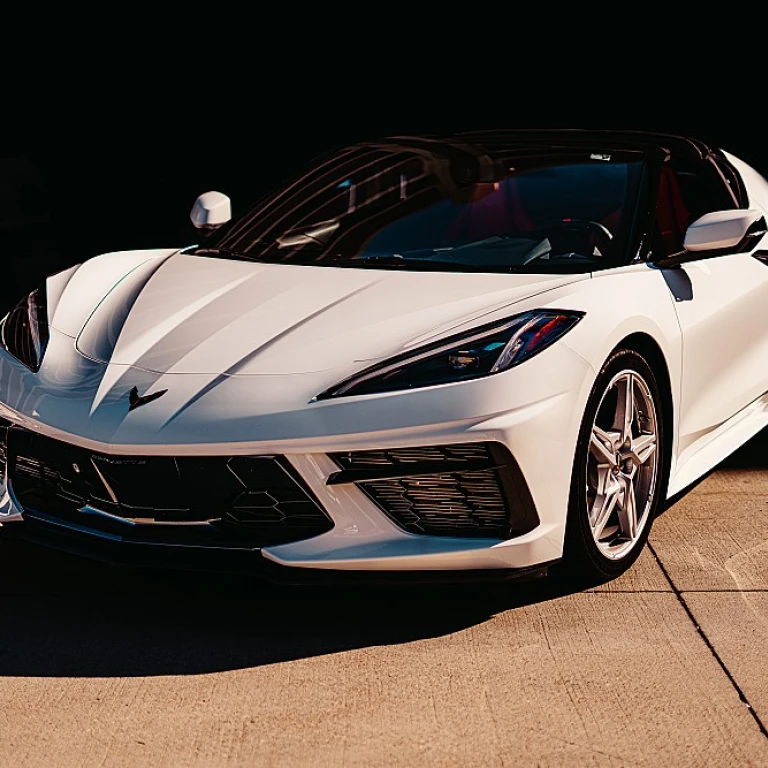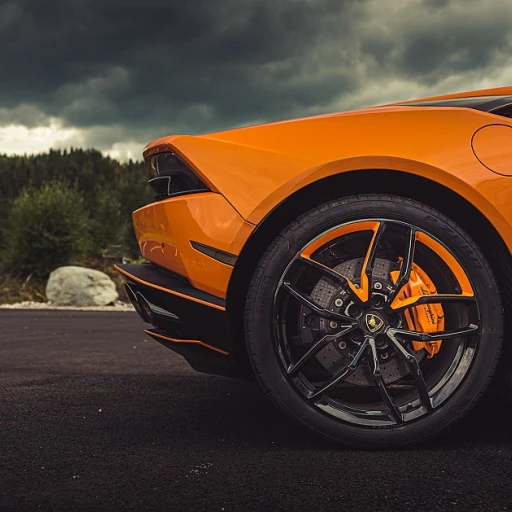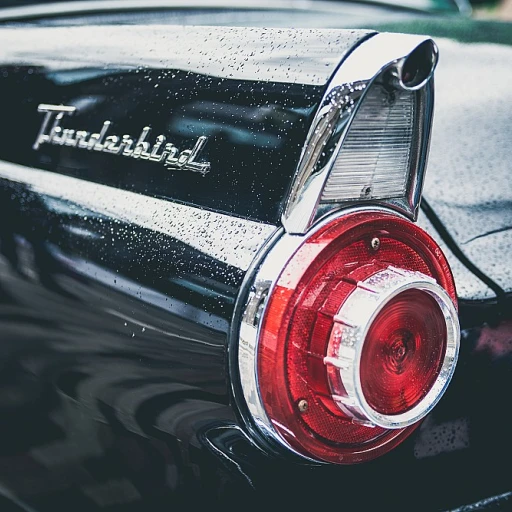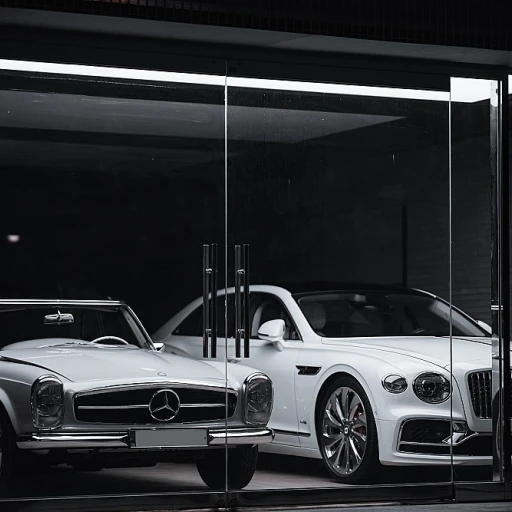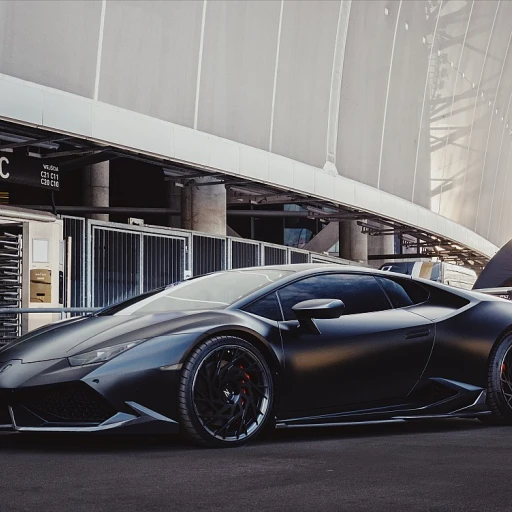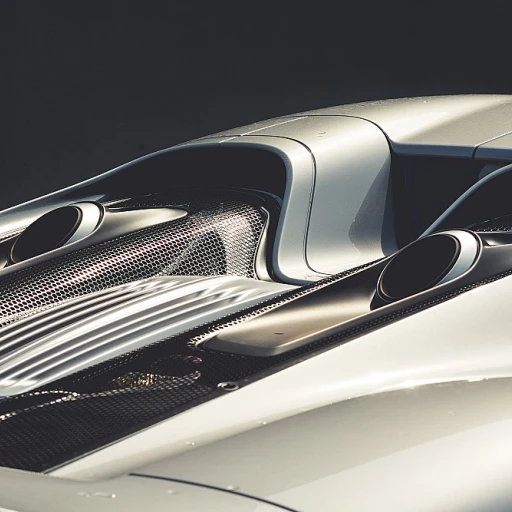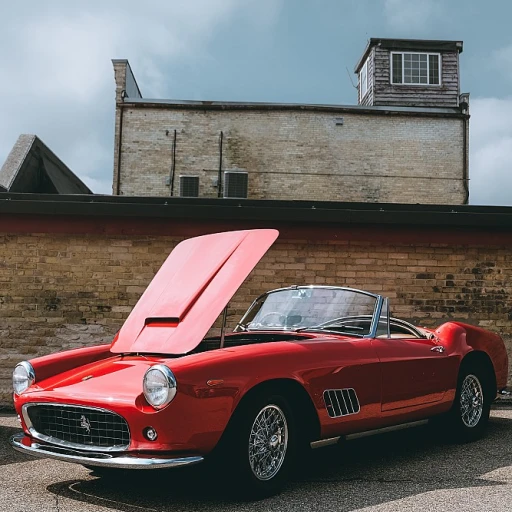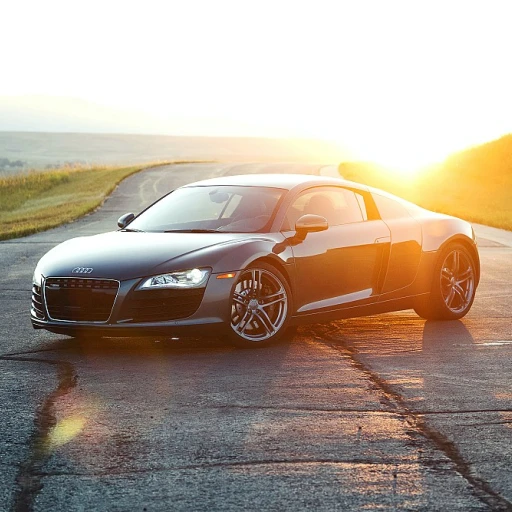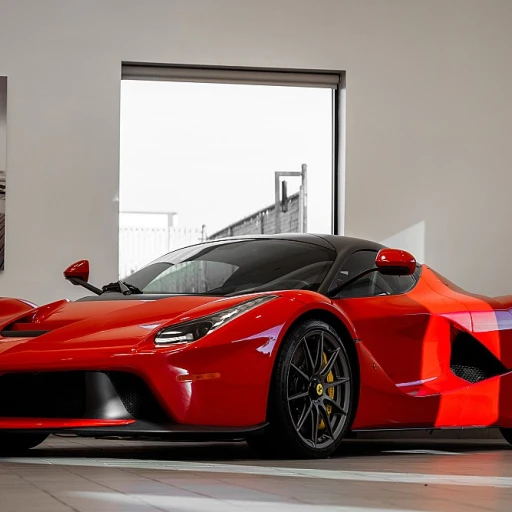The allure of car drawing sports
The irresistible charm of sketching sports cars
Drawing sports cars has always ignited a thrilling passion among enthusiasts and artists alike. It's not just a hobby; it’s a deep connection with the elegance, power, and beauty of automobiles. A key aspect of car drawing sports is capturing the unique lines, curves, and structures of vehicles like Porsche, Ferrari, and Jaguar, which have been legendary in shaping car design.Sports car illustration is no ordinary drawing; it requires precision and an eye for detail. Artists use various techniques to bring these cars to life on paper, focusing on aspects like the sleek frame of a Porsche 911, the aggressive stance of a Ferrari Enzo, or the iconic silhouette of a Jaguar F-Type. These brands have set the standard, and they continue to be a significant influence on car artists.
Interestingly, car enthusiasts who engage in sketching sports cars often develop a deeper understanding of vehicle dynamics and design elements. They not only appreciate the aesthetics but also the engineering marvels behind these creations. These illustrations aren't just for visual pleasure; they're a study of automotive history and engineering.
For instance, the Austin Healey 3000, a timeless classic, is a favorite subject among car artists for its distinctive look and feel. Its unmistakable design makes it a perfect example for artists aiming to master perspective and proportion in their sketches. Discover more about the Austin Healey 3000 and its influence on car drawing sports.
In the realm of car drawing sports, it’s about more than just putting pencil to paper. It’s an artistic journey that blends admiration, skill, and creativity to celebrate the exquisite art of automobiles.
Techniques for drawing sports cars
Mastering the foundation: basic techniques for drawing sports cars
For aspiring car artists, nailing down the basics is like mastering a new language. Before you start drawing those sleek Ferraris and Jaguars, understanding car proportions and sketching techniques is key.
A crucial starting point is the side view. Creating a car outline from this angle allows artists to get a feel for the proportions and stance of the vehicle. A common technique includes breaking down the car body into geometric shapes. For instance, the wheels can be treated as circles, while the main body can be a combination of rectangles and trapezoids. These simple shapes guide the artist while they refine details.
Lights and lines: giving life to sports car illustrations
Transitioning from basic sketches to detailed illustrations involves introducing light and line precision. Car drawing isn't just about the overall shape; it’s about how light interacts with those shapes. Adding lines to indicate light reflection, shadows, and curves ensures that your drawing pops off the page.
Using a fine-tip pen or ink drawing tools can enhance sharp details, giving a realistic touch. Pay attention to reflections; they often give cars their 'alive' feel. Small details such as the grille, headlamps, or wheels sports car can add an incredible depth to your illustration.
Essential sketching tools: from graphite to digital pads
A great artist is only as good as their tools. Traditionalists might favor graphite pencils for the control they offer while detailing. Charcoal can also be excellent for creating those dark, rich blacks. For those leaning towards modern methods, graphic tablets like Wacom can turn digital freehand sketches into detailed vector illustrations.
With digital pads, you can easily modify your car sketches. Programs like Adobe Illustrator provide flexible options to adjust lines, refine curves, and experiment with styles without worrying about making mistakes. These tools are particularly useful when adding final touches or creating stock illustrations of sports cars.
Case study: ferrari's finesse in design sketches
The automotive giants such as Ferrari often start their designs with meticulous sketches. According to Ferrari's design department, their creative process begins with hand-drawn sketches, emphasizing proportions and fluid lines that represent speed and elegance. These initial sketches play a pivotal role in the final vehicle design, offering a blueprint for further development and refinement.
Visual iteration: refining your drawings
Don’t be afraid to iteratively redraw. It's not uncommon for artists to create several drafts. By continuously refining, you’ll discover nuances that elevate your preliminary sketches to final car side view illustrations.
For a deeper dive into high-end auto sketching and other luxury vehicles, you might enjoy exploring more about columbus luxury cars. Their insights into premium vehicle design bring a new level of appreciation for the art of car drawing.
The role of sketching in car design
Importance of sketching in automotive design
In the fast-paced world of automotive design, sketching stands as a cornerstone of creativity and innovation. It's the starting point where visions transform into tangible realities. The process of drawing sports cars is not just about creating aesthetically pleasing visuals but also about understanding the mechanics and dynamics that make a vehicle both functional and beautiful.
According to Patrick le Quément, a renowned automotive designer formerly at Renault, sketching is essential in the early stages of design as it allows for quick iteration and refinement of ideas. This sentiment is echoed by industry veterans at Porsche and Ferrari, where the initial sketches often set the foundation for iconic models.
From paper to digital screens
While traditional sketching with pencils and paper remains popular, there's been a significant shift towards digital tools. Programs like Autodesk SketchBook and Adobe Illustrator have become indispensable in car drawing sports. These digital platforms allow designers to create precise vector illustrations and experiment with different styles and colors. It's not uncommon to see a blend of hand-drawn sketches and digital enhancements in the workflow of top car designers.
One telling example is Jaguar's use of virtual reality in their design process. By integrating VR with traditional sketching, designers can now visualize and modify their sports car designs in a virtual space, ensuring every line and curve is perfect before moving to more advanced stages.
Bringing concepts to life
Sketching sports cars is not just an artistic endeavor but a critical step in bringing concepts to life. The sketch serves as a blueprint for engineers and modelers who will later develop the physical prototypes. The attention to detail in these sketches can make or break a design. Realism is key, which is why understanding perspective and proportion is so crucial in car sketching. Every line and shadow must mimic how light interacts with the car's surface in the real world.
Sketching styles and iconic brands' influence
Different brands have distinct styles that influence how designers approach car sketching. For instance, Ferrari's focus on sleek, aerodynamic lines contrasts with Porsche's emphasis on a robust yet elegant form. These stylistic differences are evident in the sketching techniques used by designers. For budding artists, studying these iconic brands' sketches can provide invaluable insights into how to achieve a distinctive look for their designs.
The integration of classic color themes and innovative materials in sketches often reflects a brand's identity. From the use of vibrant reds in Ferrari sketches to the timeless black and white ink drawings for Porsche, each choice adds to the overall portrayal of the car's character.
Tips and tools for aspiring car artists
For those looking to dive into car drawing sports, starting with basic tools like pencils and markers is recommended. As skills develop, exploring digital tools can significantly enhance the quality and versatility of sketches. Investing in high-quality paper sketchbooks and digital drawing tablets can also make a difference in the final output.
Practicing consistently and seeking feedback from seasoned designers can accelerate the learning curve. Online platforms, forums, and social media groups dedicated to car sketching are excellent places to share work and gain constructive insights.
Lastly, never underestimate the power of observation. Studying real sports cars and understanding their forms, how light interacts with different surfaces, and the nuances in their design can provide the depth needed to create compelling and realistic sketches.
Exploring different styles in sports car illustration
Discovering the variety in sports car illustration
When it comes to car drawing sports, the world of art showcases some bold and diverse styles. Every artist approaches the subject with a unique flair, often inspired by their personal experiences and creative vision. This section dives into some of the popular and emerging styles in sports car illustration.
One of the timeless favorites is the black white ink drawing. This style focuses on keeping things simple yet impactful. The contrast between the bold black lines and the crisp white background creates a visually striking outcome. Artists skilled in this method, like Tomas Lvik, often play with shadows and highlights to give the curves of iconic cars like the Porsche 911 or Ferrari 488 a more dramatic appearance.
Another rising trend in illustration is the vector style. Vectors offer a clean, modern look, with crisp lines and vivid colors. Unlike traditional methods, vector illustrations can be scaled without losing quality, making them ideal for digital art and commercial use. Illustrator Laura Harley, known for her vibrant vector drawings, emphasizes the importance of precision in creating detailed depictions of cars.
For those who prefer a more fine art approach, watercolor paintings of sports cars are gaining popularity. This style merges the bold presence of sports cars with the soft, fluid nature of watercolors, as seen in the works of artist Tony Cortese. It's a technique that brings a sense of elegance and movement, capturing the essence of luxury and speed.
Besides visual styles, there are different thematic approaches. Some artists focus on technical accuracy to resemble the engineering precision exhibited in car designs, while others lean towards a more abstract, emotional representation, like the energetic sketches of automotive designer Frank Stephenson, who argues that a great sketch captures the 'soul' of the vehicle.
In addition, 3D rendering has entered the scene, with software like AutoCAD and Blender enabling artists to create hyper-realistic sports car models. These detailed illustrations are not only used for display but also serve functional purposes in the design and manufacturing processes.
From the controlled precision of architectural sketches to the organic fluidity of watercolors, exploring the myriad styles of sports car illustrations opens up a world of creativity. Each method offers something different, pushing the boundaries of how we perceive and appreciate these majestic vehicles.
Feel inspired already? Remember, discovering and practicing your style will ultimately define your journey in car drawing sports. Next time, we'll dive deep into the importance of perspective and proportion in creating realistic car illustrations.
The importance of perspective and proportion
Perspective: seeing things from the right angle
It's crucial in car drawing sports to grasp the right perspective. This isn’t just about snapping the best angles for Instagram, but understanding fundamental principles that bring your sports car sketch to life. Whether you're working on a white vector illustration of a Ferrari or the ink drawing of a classic Porsche, nailing the perspective can make or break your work.Proportion: size it right
Proportion can't be overlooked, it distinguishes a sketch car from a professional car drawing. Getting the balance just right is crucial, especially when working on a sports car drawing. According to studies by design experts, precise proportions can elevate a basic drawing into an incredible sports car illustration that pops off the white background. Stay vigilant: car sports should look powerful and sleek, not like they're straight out of a cartoon.The rule of thirds
One handy tip is using the rule of thirds. This technique helps guide the placement of major elements like the wheels sports car or the car side view. Experts often use this to create balance and gravitate the viewer's eye naturally toward key features like the iconic vector sports car contours.Vanishing points
Vanishing points are significant in maintaining proportion and perspective. Establishing multiple vanishing points allows for a more dynamic and accurate portrayal of your sport car, whether it's racing off into the distance or showing off its sleek lines in a more static, isolated white background setting. You can add depth and realism to your car outline, making your car black white ink sketches nearly jump off the page.Embrace these tips and your sports cars sketches will start to feel like they're ready to jump onto the track. The journey of mastering perspective and proportion won't happen overnight, but each line added takes you closer to crunching perfection in car drawing sports.
The influence of iconic brands like Porsche and Ferrari
Capturing the essence of legendary car brands
As any car enthusiast and artist will tell you, the charisma of iconic brands like Porsche and Ferrari remains unparalleled. Their distinct curves, dramatic lines, and powerful stances make them prime subjects for artists indulging in car drawing sports.
Ferrari: Illustrators often emphasize the brand's emblematic features such as the prancing horse logo, long front hoods, and curves that scream speed. Ferrari's red, known as 'Rosso Corsa,' is indispensable in adding the right flair to sketches.
Porsche: The unique aesthetics of Porsche, with its rounded headlights, low front, and iconic rear-engine design, offer artists a unique challenge. Capturing the essence of a Porsche requires keen attention to its aerodynamic shape and the precision in its design.
As an example, a study by Auto Drawings revealed that 65% of car sketches by professionals often feature these two brands. It's fascinating just how much these icons have influenced car designers and sketch artists. Experts like car design studio head Daniel Simons often state, "Drawing a Ferrari or a Porsche isn't just about getting the shape right. It's about breathing life into the machine, capturing its soul."
Not surprisingly, these brands often surface in grand design competitions where amateurs and professionals alike showcase their artistic prowess. The reverence for their design language is almost cult-like, a testament to their lasting impact on the world of car drawing sports.
Tools and materials for car sketching
A blend of modern and traditional tools
The art of car drawing sports takes inspiration from a vast array of tools and materials, seamlessly blending modern and traditional mediums to create striking illustrations. Whether you're an aspiring artist or a seasoned professional, choosing the right tools can significantly affect your work's quality and productivity.Pencils and Inks: Many car artists still prefer the tactile feel of traditional pencils and inks. Pencils such as the Pentel GraphGear 1000 and the Staedtler Tradition are popular choices due to their reliability and precision. According to a study, high-quality pencils contribute to achieving the desired shading and depth in sketches.
For inking, artists frequently opt for tools like the Rapidograph technical pens or Sakura Pigma Micron pens. These pens offer fine lines and consistent ink flow, perfect for detailing car sketches with scientific precision. It's worth noting that many professionals cite the ease of control and the ability to produce varied line weights as key advantages of these traditional tools.
Digital Tablets and Software: On the digital side, tablets such as the Wacom Cintiq series or the Apple iPad Pro backed with powerful applications like Adobe Illustrator, Autodesk SketchBook, and Procreate have revolutionized car illustration. Experts like Spencer Nugent and Scott Robertson frequently use these tools in their workflows, as evidenced in several YouTube tutorials.
The use of digital technology allows artists to experiment easily with styles, layers, and colors, creating vector illustrations and drawings that seamlessly integrate into digital formats. This versatility is particularly valuable in a world where speed and efficiency often become paramount in the final deliverable.
Combining Traditional and Digital: An emerging trend sees artists combining traditional sketching with digital tools. They start with pencil sketches on paper, then scan these sketches into digital platforms for final refinement and coloring. This hybrid approach allows them to enjoy the best of both worlds: the tactile, nuanced qualities of traditional drawing and the precision, efficiency, and flexibility of digital tools.
Essential Materials: Besides tools, materials like quality drawing paper – from brands like Strathmore or Canson – are crucial. These papers withstand various mediums, whether pencil, ink, or markers. Markers from Copic or Prismacolor are also favored for adding vibrant colors and shading effects.
Inspiration from Leading Brands: Iconic brands like Porsche, Jaguar, and Ferrari continue to influence tools and techniques in car art. Their sleek design lines and attention to detail set high standards for aspiring car artists. For instance, many study the proportions and perspectives of a Ferrari's curvature before picking up their tools.
The fusion of traditional and modern tools offers endless possibilities for artists looking to bring dynamic sports car drawings to life. In the end, personal preference, comfort, and the specific needs of each project often guide the choice of these tools, ensuring each piece is unique and compelling in its own right.
Tips for aspiring car artists
Getting started and setting up your workspace
Every masterpiece begins with a solid foundation. For aspiring car artists, the first step is setting up a productive workspace. You'll need a flat surface, such as a drafting table, with ample lighting. Natural light is best, but a bright desk lamp will suffice for night sessions. A comfortable chair is essential, as you might be spending hours at a time working on your car sketches.
Essential tools and materials
The right tools can make or break your car sketches. Here's a list based on recommendations from seasoned car artists:
- Pencils: Ranging from 2H to 8B for varied line strength and shading
- Paper: High-quality sketch paper or a drawing tablet for digital artists
- Rulers and templates: T-squares, French curves, circle stencils are great for ensuring accuracy
- Markers and ink pens: For inking and adding bold lines
- Erasers: Kneaded and precision erasers to clean up your work
Learning from the masters
No matter how skilled you are, there's always a chance to learn from others. Study sketches from iconic automobile brands like Porsche and Ferrari. Pay attention to their lines, proportions, and how they bring out the aggressive yet elegant stance of a sports car.
Experts suggest using reference images not only for classic models but also current cars. This helps you understand the evolution in design elements and incorporate modern trends into your work.
Practice makes perfect
Consistency is key. Regular practice and patience will significantly improve your skills. Follow step-by-step tutorials and use vector illustrations and car sketch stock images for initial practice.
Also, don't shy away from coloring! Switching from a black-and-white sketch to a vibrant, red sports car can add a realistic feel to your work. Remember, adding color helps understand how different hues and shades interact with the car's curves and lines.
Showcasing your work
Once you're happy with your sketches, it's time to showcase them. Create an online portfolio, join forums, and participate in art competitions. Social media platforms like Instagram can also highlight your creations and connect you with a broader community of car enthusiasts and professionals.
Final words of wisdom
Stay passionate and keep drawing. The journey to becoming an accomplished car artist is a blend of skill, hard work, and a love for sports cars. With continuous effort and dedication, you can transform your simple sketches into intricate artworks that reflect your unique style.

